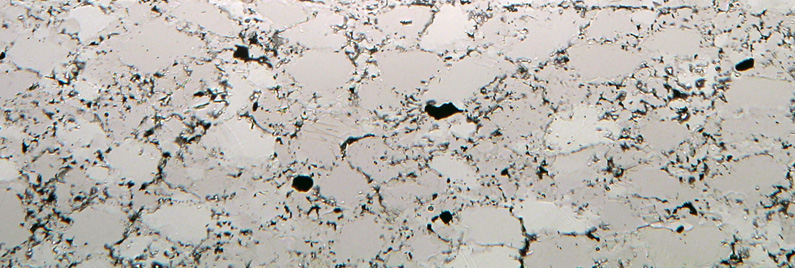
Aug 10, 2014 | No Comments
Got a microscope a few weeks back on ebay, a used Olympus BX51. Generally I’m very happy with it with one exception… under plane polarized light, grains are appear lighter or darker based on orientation and often look a bit iridescent. The image above of an experimentally deformed quartzite was taken in “plane” polarized light. I put “plane” in quotes because there’s clearly something else going on. The large grains (all quartz) should all be equally illuminated. I’ve seen this effect in a lot of scopes over the years, so I know it is pretty common. I just couldn’t stomach having this problem with my new microscope though so I started disassembling the thing trying to isolate the problem (be careful if you try this at home lest the iris diaphragm on your condensing lens fall out… it took me all afternoon to get that thing back together). It turns out that the problem is with the lower polarizer. If you take it out and put the upper polarizer in its place in the light column this doesn’t happen. I posted this to the microstructure forum on facebook and was told this is known as “false pleochroism.” Apparently it’s a problem unique to Olympus and some other scopes. I’m still waiting for the Olympus contact in my area to respond regarding the availability of a replacement polarizer. This issue can actually be fairly distracting in some thin sections, e.g. Olive turns pleochroic blue. I’m equally interested though in what that polarizer (or it’s coating) could possibly be doing to the light passing through it. This does not make any...

